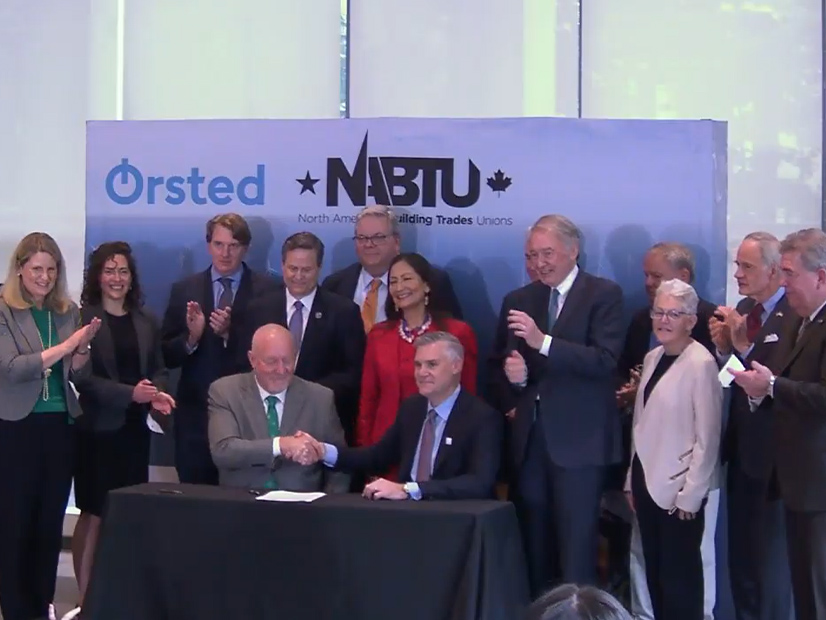
Ørsted signed a project labor agreement (PLA) Thursday with North America’s Building Trades Unions (NABTU), pledging to fund worker training and use union labor to construct the company’s U.S. offshore wind farms.
Union leaders and Biden administration officials, who joined the company in celebrating the pact at the AFL-CIO Building in Washington, called it proof that clean energy investments can produce economic benefits as well as address climate change.
“This is what we’ve been waiting for,” said Amanda Lefton, director of the Bureau of Ocean Energy Management, who added that it was the first national agreement of its kind. “We’re setting the bar for the rest of the industry.”
The National Offshore Wind Agreement, which was authorized by 15 international union presidents and their local affiliates, covers all Ørsted contractors and subcontractors that will perform offshore windfarm construction in the U.S.
Ørsted operates the nation’s first offshore wind farm, Block Island Wind Farm in Rhode Island, and has six offshore projects in development: Revolution Wind (704 MW) south of Rhode Island and Connecticut; Sunrise Wind (924 MW) and South Fork Wind (132 MW) off New York; Ocean Wind 1 (1,100 MW) and Ocean Wind 2 (1,148 MW) off New Jersey; and Skipjack Wind (966 MW) off Maryland.
Sean McGarvey, president of NABTU, said he was skeptical when AFL-CIO President Elizabeth H. Shuler urged him to seek an agreement for OSW construction.
“I’ll be honest with you. … In the world of onshore wind and solar, our experience for ‘high-road’ construction has not been a good one for the most part,” he said.
He thanked the Biden administration for its “gentle nudging” toward a deal.
“They’ve done more for the poor, the working class and the middle class than anybody in my almost 60 years of life,” he said, comparing the agreement to Franklin Delano Roosevelt’s creation of the Tennessee Valley Authority. “There are hundreds of thousands of families who were born, raised and buried in the middle class through their union cards and working with TVA.”
Ørsted used a PLA in constructing Block Island. Last year, Atlantic Shores Offshore Wind, a joint venture between affiliates of the Anglo/Dutch oil giant Shell and France’s EDF, signed a memorandum of understanding with labor unions for its project off New Jersey. (See Developer to Use Union Labor for NJ OSW Project.)
U.S. Commerce Secretary Gina Raimondo, who helped shepherd Block Island as governor of Rhode Island, said the Block Island PLA resulted in “a really close relationship between labor and business. … It did work. And now we scale that.”
Among the unions signing the agreement are the International Brotherhood of Electrical Workers, the International Union of Operating Engineers, the Laborers’ International Union of North America and the International Association of Bridge, Structural, Ornamental and Reinforcing Iron Workers.
Raimondo made a point to thank “the men and women of the building trades … the folks that get out there every day and do this work.
“That work is dangerous. You know, you try to be an operating engineer going all the way up [a turbine tower] in the middle of the ocean with the wind blowing. This stuff is tough.”
The agreement sets diversity targets and performance monitoring, with workforce equity committees on each project. Ørsted said it has committed $23 million to support new or existing OSW job training programs in the U.S.
“Women, communities of color, formerly incarcerated, there are so many people that are going to be recruited and go through these … training centers up and down the East Coast and learn skill sets to last a lifetime,” McGarvey said.


